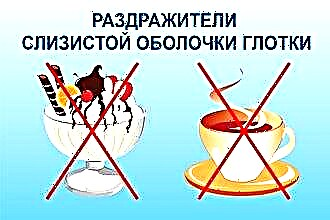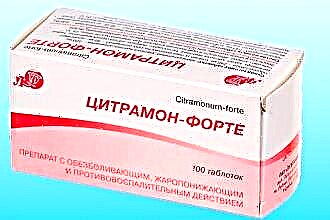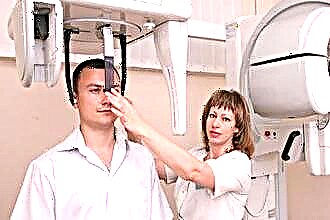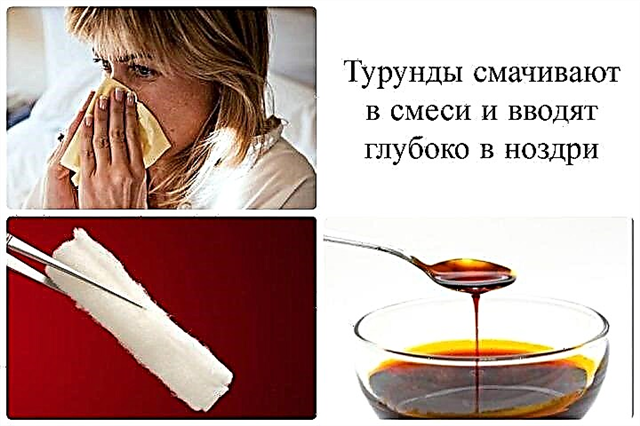Sore throat is one of the most common symptoms of respiratory diseases; complaints of soreness, aggravated by swallowing, are regularly heard at the reception by therapists and otolaryngologists. How does the disease manifest itself? How is strep throat in adult patients treated?
 What is strep throat? This is a general term that combines many acute pathological processes of an inflammatory nature in the pharyngeal region. They proceed in stages, start suddenly (acutely), manifestations grow rapidly. All acute inflammatory lesions of the pharynx can be divided as:
What is strep throat? This is a general term that combines many acute pathological processes of an inflammatory nature in the pharyngeal region. They proceed in stages, start suddenly (acutely), manifestations grow rapidly. All acute inflammatory lesions of the pharynx can be divided as:
- infectious;
- non-infectious.
Infectious pharyngitis, in turn, can be viral, bacterial, fungal. Non-infectious inflammation occurs under the influence of a traumatic factor (thermal, chemical, mechanical aggressor), with sensitivity to allergens. The type of damaging factor is of great importance for the nature of the course - for example, with pharyngitis caused by a respiratory virus, the condition is short-term, recovery occurs after a few days. However, when in contact with a harsh chemical, tissue repair can take much longer. This accounts for the difference in the severity of the manifestations.
It is also necessary to understand what inflammation is. The inflammatory process is classified as follows:
- catarrhal;
- purulent;
- fibrinous.
Acute catarrhal pharyngitis is observed with infection with viruses and some non-infectious variants of inflammation - the nature of the pathological discharge is predominantly mucous. With purulent inflammation, one should think about a bacterial infection. Fibrinous inflammation requires clarification of the presence of oropharyngeal diphtheria in the patient.
Patient complaints
Interviewing an adult patient in order to clarify complaints is an integral part of a full-fledged full-time examination in a doctor's office. To confirm the diagnosis, it is necessary to know what worries the patient, during what period of time pathological manifestations persist. This is important for determining the nature of the course of the disease, detecting significant features. The patient can describe the following symptoms of strep throat:
- Pain in the throat.
Pain syndrome is an expected phenomenon, since the disease proceeds as an acute inflammatory process. The nature of pain and its severity depends on the causative factor (trauma, infection, allergen), the area of the affected surface, the type of inflammatory changes (catarrhal, serous, purulent inflammation). So, with purulent pharyngitis, the pain syndrome cannot be ignored, and with allergic inflammation of the pharynx, pain is rarely the leading symptom. The pain often radiates to the ears.
- Discomfort in the throat, coughing.
They result from dryness, inflammatory edema. Patients report tingling, scratching, irritation in the throat. A typical manifestation of acute pharyngitis is pharyngeal cough - a weak cough that is obsessive and is not accompanied by the release of copious sputum.
- Violation of the general condition.
Acute inflammation of the pharynx causes weakness, headache, fatigue, and fever. At the same time, the intoxication syndrome is most often mild, the fever remains within the subfebrile parameters (37.1-37.9 ° C).
When assessing the patient's complaints, it must be remembered that an exacerbation of pharyngitis in a chronic course manifests itself in the same way as an acute form of pathology.
The patient may notice blurred, mild manifestations of inflammation of the pharynx, even in the absence of a febrile reaction, weakness. Discomfort, "lump", dry throat are likely signs of chronic pharyngitis.
Throat changes
Pharyngoscopy (visual examination of the pharynx) is another stage of the patient's examination, which allows one to compare complaints with the detected objective changes and, on the basis of this, formulate a diagnosis of acute pharyngitis. Symptoms and treatment in adults are interrelated concepts, since symptomatic therapy that relieves the patient's condition is selected in accordance with the pathological manifestations. Pharyngeal mucosa in acute inflammation:
- swells, turns red;
- becomes grainy.
Lymphoid follicles enlarge, turn red, and may become covered with plaque. With diphtheria, plaques densely adhered to the mucous membrane appear, having a grayish tint, with pharyngomycosis - loose or dense white-yellow plaques. Viruses of the herpes group provoke the appearance of a bubble rash - reddish or yellowish bubbles are visible on the walls of the pharynx, which transform into small ulcers. In allergic pharyngitis, the most expected symptom is mucosal edema.
When it comes to exacerbation of chronic pharyngitis, you can also see:
- dryness and thinning of the mucous membrane, mucus of a viscous consistency and crust with atrophy;
- thickening of the mucous membrane, an increase in the size of lymphoid follicles, the presence of abundant mucous secretions with hypertrophy.
If, after examination, signs of chronic inflammation of the pharynx are not detected, but the symptoms do not subside longer than they could with an acute process, pharyngitis can be classified as subacute. To cure a patient, it is necessary to find out what the prolonged course of the disease is connected with - for this, additional diagnostic methods are used (in particular, laboratory ones).
Home treatment
Treatment of acute pharyngitis, as a rule, is carried out on an outpatient basis, at home - the frequency of visits for re-examination is determined by the attending physician. An exception may be trauma to the pharynx or some infectious diseases (for example, diphtheria).
How to treat strep throat at home? The patient is advised to:
 Eliminate irritants of the pharyngeal mucosa.
Eliminate irritants of the pharyngeal mucosa.
These include hot or cold, spicy, pickled, solid, with bone fragments food products, alcohol, carbonated drinks, as well as dry cold or hot air, chemicals, tobacco smoke, dust. Moderate restrictions on voice load should be observed.
- Balance your drinking regime, stick to your diet.
It is worth drinking a sufficient amount of liquid (clean water, tea, fruit drink), as this promotes detoxification, moisturizing the mucous membrane. It is necessary to eat easily digestible, vitamin-rich foods of soft, semi-liquid or liquid consistency.
- Being in bed with a fever.
If the temperature rises to high values and the condition deteriorates sharply, significant physical exertion should be abandoned, and bed rest should be observed.
To fight inflammation, gargle is carried out - a salt solution, an infusion of chamomile, eucalyptus, calendula is useful. Medicinal plants are able to provide not only anti-inflammatory, but also antiseptic effect. Gargle should be 5 to 10 times a day. If there is no allergy, a small amount of honey can be sucked in the mouth.
Gargling too often in strep throat can have adverse effects.
It is possible to treat the throat with a gargle, but at the same time we must not forget that excessively diligent cleansing of the mucous membrane leads to the removal of mucus, which moisturizes the pharynx and helps fight infection.In addition, one should pay attention to the concentration of the basic substance, its effect. Concentrated saline is irritating, and soda-based solutions can dry out mucous membranes and are therefore not suitable for people with atrophic pharyngitis.
Pharmacological agents
What pharmacy can help if acute pharyngitis is found? Treatment is carried out with antiseptics, pain relievers (anesthetics), anti-inflammatory, antibiotics, antiallergic drugs. The doctor can prescribe each drug separately or suggest taking combined drugs that combine several directions of action at once.
Antiseptics
These are Chlorhexidine, Geksetedin, Ambazon (Faringosept), iodine-based drugs - they have antimicrobial, sometimes also antifungal effect. Do not combine drugs containing Chlorhexidine with iodine preparations.
Anesthetics
Local anesthetics for the throat (Lidocaine, Benzocaine, Tetracaine) help relieve pain and discomfort, they act for a limited time (up to 6 hours). They do not cure pharyngitis, but they help relieve the condition.
Anti-inflammatory
Local anti-inflammatory drugs (Flurbiprofen) help fight inflammation and reduce the severity of pain. Systemic anti-inflammatory drugs are used to control temperatures above 38.5 ° C (Paracetamol, Ibuprofen).
Antibiotics
They are divided as local (Fusafungin, Bioparox) and systemic (Augmentin, Amoxicillin). These drugs are indicated for bacterial etiology of pharyngitis, not intended for self-medication.
Antiallergic
These are antihistamines (Cetirizine, Levocetirizine), cromones (sodium cromoglycate), glucocorticosteroids (Fliksonase, Beclomethasone). They are used to relieve allergic reactions and are prescribed only by a doctor.
In acute pharyngitis, local therapy is most often indicated - gargling, irrigation with aerosols, resorption of lozenges, tablets, lozenges.
Taking medicines inside in the form of tablets or injecting drugs is used for acute purulent inflammation of the pharynx, allergic pharyngitis, as well as for severe course of any form of the inflammatory process.

 Eliminate irritants of the pharyngeal mucosa.
Eliminate irritants of the pharyngeal mucosa.

